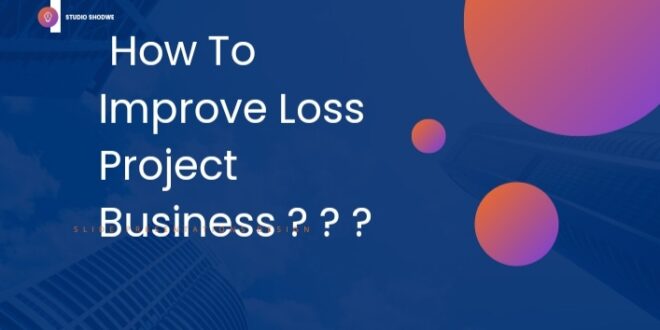How Construction Firms Are Using AI Cameras And Software To Improve Project Tracking
Construction firms are under immense pressure to complete projects on time and within budget. Even a small delay can cause huge financial losses. Therefore, construction firms are always looking for ways to improve project tracking.One of the latest tools that construction firms are using to improve project tracking is AI cameras and software. AI cameras are specially designed to capture images of construction sites and then use artificial intelligence to analyze these images. The software then generates a report that can be used by construction managers to track the progress of the project.There are many benefits of using AI cameras and software for project tracking. First, it saves a lot of time as the analysis can be done automatically. Second, it is more accurate than manual analysis as there is less scope for human error. Third, it can be used to track multiple projects simultaneously, which is not possible with manual methods.AI cameras and software are changing the way construction firms track projects. They are fast, accurate, and easy to use, which makes them an indispensable tool for any construction firm that wants to stay ahead of the competition.
How AI Cameras And Software Improve Project Tracking
Construction firms are turning to AI cameras and software to improve project tracking. By using these tools, firms can improve communication and coordination among workers, track inventory levels, and monitor construction progress.AI cameras are equipped with sensors that can detect and identify objects. This information is then relayed to a server where it can be analyzed by software. This software can identify trends and potential problems, such as a worker who is not following safety protocol or a shortage of materials.The benefits of using AI cameras and software include improved safety, coordination, and efficiency. By using these tools, construction firms can avoid costly mistakes and delays.



The Benefits Of AI Cameras And Software As construction firms move to adopt AI cameras and software to improve project tracking, there are a number of potential benefits that can be realized.
First, AI cameras and software can help improve the accuracy of project tracking. By automatically tracking and logging data related to construction projects, AI cameras and software can help reduce the margin of error when it comes to manually tracking data. This can help ensure that construction firms have a more accurate picture of how their projects are progressing, which can in turn lead to better decision making.
In addition, AI cameras and software can also help improve the speed of project tracking. By automating data collection and analysis, AI cameras and software can help construction firms save time that would otherwise be spent on manually tracking data. This can free up resources that can be devoted to other aspects of the construction process, leading to overall efficiency gains.
Finally, AI cameras and software can also help improve the level of detail that construction firms are able to track. By automatically capturing data at a very granular level, AI cameras and software can provide construction firms with insights that would otherwise be difficult or impossible to obtain. This can allow construction firms to make more informed decisions about their projects, leading to better outcomes.



How AI Cameras Work Construction firms are using AI cameras and software to improve project tracking. The cameras use sensors to detect when a worker arrives on site, when they leave for lunch, and when they clock out for the day. The software then uses algorithms to track the location of the workers and their progress on the project. The AI camera system was developed by a company called We work. The system is currently being used by a construction firm in New York City. The firm is using the system to track the progress of a $1.5 billion project. The AI camera system is just one example of how construction firms are using technology to improve project tracking. Construction firms are also using drones, GPS, and lasers to improve project tracking.
How Software Works
Construction firms are using a variety of AI cameras and software to improve project tracking. By using these tools, construction teams can monitor progress, identify potential problems, and make changes in real time. One popular AI camera is the DJI Phantom 4 Pro. This drone is equipped with a 4K camera and can be controlled by a smartphone or tablet. The drone automatically takes photos and videos of the construction site, which are then uploaded to the cloud. From there, the data is analyzed by the software and various reports are generated. The software can identify potential issues, such as safety hazards or equipment that needs to be repaired or replaced. It can also track progress on the project and generate daily or weekly reports. This information is valuable to construction managers, as it allows them to see where the project is at and make changes if necessary. Another type of AI camera that is being used in construction is the Google Street View Camera. This camera captures 360-degree photos and videos of the construction site. The data is then stitched together to create a virtual tour of the site. This is valuable for managers who want to see how the project is progressing but cannot be onsite all the time. Construction firms are also using AI software to track employee productivity. This includes tracking how many hours employees work, how many breaks they take, and how much work they actually get done. By tracking this information, construction firms can identify areas where employees need more training or where processes need to be changed. Overall, AI cameras and software are providing a wealth of information to construction firms. By using these tools, firms can improve project tracking, identify potential problems, and make changes in real time.
The Different Types Of AI Cameras And Software Available
As construction firms move towards using AI cameras and software to improve project tracking, a number of different options are available on the market. One type of AI camera is the drones, which can be used to take aerial photographs or videos of construction sites. This can be helpful in getting an overview of the progress of a project, as well as identifying any potential problems. Another type of AI camera is the ground-based cameras, which can be used to take photos or videos of construction projects from ground level. These can be useful for getting a closer look at specific aspects of a project, or for tracking the progress of work over time. There are also software programs available that use AI to improve project management and tracking. These programs can help construction firms to keep track of deadlines, budget, and other important aspects of a project. They can also provide insights into how a project is progressing, and identify potential problems that need to be addressed.
Which Type Of AI Camera And Software Is Right For Your Business?
There are many different types of AI cameras and software available on the market today, each with its own unique features and benefits. As a construction firm, it’s important to choose the right type of AI camera and software for your specific needs in order to improve project tracking. One type of AI camera that is becoming increasingly popular among construction firms is the drones equipped with cameras. Drones can provide a birds-eye view of the construction site, which can be used to track progress and identify any potential problems. Another benefit of using drones is that they can be equipped with thermal imaging cameras, which can help to identify hot spots on the construction site that could indicate a fire hazard. Another type of AI camera that is gaining popularity among construction firms is the 360-degree camera. This type of camera can be used to create a virtual reality tour of the construction site, which can be used by potential buyers or investors. The 360-degree camera can also be used to create a 3D model of the construction site, which can be used for project planning and coordination. Finally, there are also AI-powered security cameras that are becoming increasingly popular among construction firms. These types of cameras use facial recognition software to identify potential trespassers or other threats on the construction site. The facial recognition software can also be used to track the movements of workers on the construction site, which can help to improve safety and efficiency.
How To Implement AI Cameras And Software Into Your Business
When it comes to construction, time is money. Construction firms are always looking for ways to improve project tracking and stay on schedule. In recent years, construction companies have turned to artificial intelligence (AI) cameras and software to help them achieve these goals. AI cameras and software can be used for a variety of purposes, from monitoring job site safety to tracking inventory levels. AI-powered project tracking systems can even help construction firms predict when a project will be completed, based on past performance data. Implementing AI cameras and software into your business can be a complex undertaking. Here are a few things to keep in mind as you explore this new technology:
1. Define your goals. What do you hope to accomplish by using AI cameras and software? Do you want to improve safety at your job sites? track inventory levels more accurately? or predict project completion dates? Once you know what you want to achieve, you can select the right AI cameras and software for your needs.
2. Consider your budget. AI cameras and software can be expensive, so it’s important to consider your budget when making a purchasing decision. There are a variety of options on the market, so be sure to compare features and prices before making a final decision.
3. Train your employees. Your employees will need to know how to use the AI cameras and software properly in order to get the most out of them. Be sure to provide training on how to set up the cameras, how to use the software, and how to interpret the data they collect.
4. Monitor results regularly. Once you’ve implemented AI cameras and software into your business, it’s important to monitor the results regularly. This will help you identify any problems and make necessary adjustments to ensure that you’re getting the most out of this new technology.
The Future Of AI Cameras And Software
As construction firms move to adopt new technologies, AI cameras and software are becoming increasingly popular tools for improving project tracking. By using cameras to automatically capture images and video of construction sites, and then using software to analyze this data, construction firms can gain valuable insights into the progress of their projects. This data can be used to track project milestones, identify issues and bottlenecks, and predict project completion dates.
AI cameras and software offer a number of advantages over traditional methods of project tracking. First, they allow construction firms to collect data more frequently and in greater detail than would be possible with manual methods. Second, they provide construction firms with real-time data that can be used to make decisions about the project on the fly. Finally, AI cameras and software offer the potential for construction firms to save time and money by reducing the need for manual labor.
While AI cameras and software are already having a positive impact on construction firm management, there is still room for improvement. In particular, construction firms will need to find ways to integrate AI cameras and software into their existing systems and processes. Additionally, as AI technology continues to evolve, construction firms will need to stay up-to-date on the latest advances in order to maximize the benefits of these tools.
Conclusion
Construction firms are under constant pressure to deliver projects on time and within budget. To meet these demands, construction firms are turning to AI cameras and software to improve project tracking.AI cameras and software offer many benefits to construction firms, including the ability to track progress, identify potential problems, and improve communication between project managers and workers.There are many different types of AI cameras and software available on the market, so it is important to do your research to find the right solution for your business.The future of AI cameras and software in construction looks very promising. as firms continue to find new ways to utilize this technology to improve project tracking.
If your organization has put most of its assets onto multiple public cloud services, it should be clear that your old on-premises security solutions and policies will no longer work. However, solutions for single-cloud models may not be adequate. Here’s how to make your multi-cloud security posture as strong as it can be.
Cloud security fundamentals”It’s almost guaranteed that some security controls won’t operate the way they did in-house or won’t be available in cloud service provider environments,” said Dave Shackleford, a senior instructor at the SANS Institute, in a 2018 white paper sponsored by Qualys. “Looking at core security and IT controls, security teams will quickly realize that some controls are made easier in the cloud, while others will need to be modified in order to meet requirements.”
The chief trade-off you make for the cloud’s flexibility and cost savings is a drastic loss of control and visibility. You’re running your business operations on someone else’s server, and you will have to use the cloud service provider’s (CSP) own application-program interfaces (APIs) to get a full picture of what’s going on in your cloud instances.
Because of this, consider security solutions such as a cloud access security broker (CASB) that can monitor traffic between your endpoints and other on-prem assets and the cloud, or monitoring and vulnerability-management tools such as a cloud-native app protection platform (CNAPP) that works with your CSP’s APIs to provide maximum visibility into and control over your cloud workloads.
You will need to thoroughly comprehend the shared-responsibility model with your CSP so that you will immediately know who must fix what, as well as the CSP’s security controls, tools, compliance status and terminologies. In many ways, you’re taking on the CSP as a business partner, so perform your due diligence accordingly.
Why multi-cloud is different from single-cloud Using more than one public cloud service provider makes these issues even more complicated. Just to take one example, Amazon Web Services, Microsoft Azure and Google Cloud Platform may refer to the same things using different terms.
“Each cloud provider identifies assets with its own proprietary set of attributes, and there is little commonality in how some of the key attributes are named,” said Swapnil Ahirrao, a senior product manager at Qualys, in a 2022 blog post. “To identify an instance, AWS uses ‘Instance ID,’ Azure uses ‘VM ID,’ and GCP uses ‘VM Instance ID.’ For an organization employing a multi-cloud strategy, this quickly becomes challenging from a reporting and analytics perspective.”
To maintain competitive advantages, each major CSP does things differently, and each provides its own security tools for clients to use, with their own learning curves. Unifying the controls and feeds from those tools will best be achieved with a third-party solution.
“Some vendor products will work only in specific environments, and most cloud providers’ built-in services will work only on their own platforms,” Shackleford said. “Such siloing can lead to major headaches when business needs drive organizations to a multi-cloud strategy, necessitating the revisitation of security controls that meet requirements.”
How to make your multi-cloud environment more secureHere are several things your organization should do to improve its multi-cloud security posture. Some apply to hybrid or single-cloud environments too, and others are just common sense, but all should be useful.
Strive for maximal, unified visibility of assets and workloads across different cloud environments.The adage is that “you can’t protect what you can’t see,” so you want to see as much as you can. Work with your CSPs to gain visibility, but also investigate buying or subscribing to a cloud-native third-party solution that can continuously collect data and control aspects of all your cloud instances from a single control panel.
“Look for tools that can help you manage both in-house and cloud assets in one place,” said Shackleford. “Security and operations teams are usually spread too thin to manage multiple management and monitoring tools across one or more cloud provider environments.”
Strive for maximal automation in security and vulnerability management.You can hire only so many humans for your security staff, and overworked staffers make mistakes. Lighten their load and strengthen your cloud security by implementing automated processes to handle routine tasks and orchestration programs that can remediate security issues on their own.
“Complex organizations with critical missions can augment and empower their cyber workforces through automation, machine learning and artificial intelligence,” said Brad Beaulieu, a principal at Booz Allen Hamilton, in a 2020 blog post. “Leveraging innovation in these areas can scale the bandwidth and reach of small cyber teams by assisting with activities like normalizing the data, establishing baselines, detecting anomalies, automating repetitive tasks, rapidly retrieving information, and automatically enforcing standardized security policies and configurations.”
Shift left.
You need to integrate automated security processes into coding and app development. Build automation into your continuous integration/development (CI/CD) cycle so that security is baked into cloud development from the get-go.
Gain a thorough understanding of shared responsibility with each cloud service provider.Each CSP may have a different idea of what it’s responsible for and what you’re responsible for. Make sure you know exactly what those things are, and craft your cloud-security policies accordingly.
Understand how each CSP works.You want clear comprehension of each of your CSP’s infrastructure, security tools (such as Google Cloud Security Command Center or Azure Security Center), APIs and other technical matters.
Analyze, review and update your own end — continuously.Be ready to adjust or even overhaul your security controls, policies and tools, your own cloud configurations and settings, and your security team’s skills in handling multi-cloud environments. You may need to institute tougher internal policies because the risks of error will likely be multiplied.
“A single person can spin up a new server in almost no time at all,” said Beaulieu. “But unless project teams are perfectly in sync with their agency’s cyber operations, that kind of velocity can easily lead to isolated environments and blind spots — creating substantial risk, as securing an enterprise truly does require full, real-time awareness across the entire network.”
Harden your cloud infrastructure.Lock down ports, access, applications and interfaces, and integrate an infrastructure-as-code (IaC) solution into your cloud-management process. You don’t want any ports left open, any dormant accounts left active, or any third-party software left out-of-date, and IaC will help you manage that.
“Any cloud applications and instances should be as locked down as possible, running a minimum of services, and configuration requirements should be revisited to ensure any cloud-based infrastructure is as resilient as possible,” said Shackleford.
Unify identity and access management (IAM).You need to be able to control user access to everything across your cloud and on-prem platforms from a single control panel.
Log everything.
You’ll likely need to refer to logs to remediate security issues and other problems, even those that may have occurred months or years in the past.
“Logs represent a mind-boggling, storage-capacity-busting amount of data, but it really is necessary to keep them accessible for threat hunts and investigations,” said Beaulieu. “With the availability of abundant, affordable cloud storage, particularly for infrequently accessed archival storage, an insufficient budget is no longer an excuse.”
How to make more money in 2023: Business coach’s 12 habits for a successful 2023
Making more money will be high on the agenda for many people in the year ahead whether that’s by taking on a side hustle or working harder on their full-time business. The founder of Limitless Mentoring spoke exclusively to Express.co.uk about how he has developed a set of habits that have helped him in his professional life.
When it comes to what determines success, discipline and focus are key, claims Mr Wise who has successfully set up a number of successful businesses.
The entrepreneur has helped hundreds of other business leaders follow in his footsteps and is now sharing 12 habits he says are crucial if people are serious about hitting their goals.
He said: “Successful entrepreneurs have a clear vision of what they want to achieve, and they stay focused on their goals. I recommend setting specific, achievable goals to ensure you have a roadmap to follow.
“We all have a grand vision for the future, but without a clear roadmap from Point A to Point B, your vision and goal will remain exactly that – a vision. Break everything down into its smallest manageable chunks if you really want to start seeing progress. The impact that getting yourself into a positive feedback loop by continuously burning through your to-do list cannot be understated.”
READ MORE: HSBC is one of top easy access accounts plus customers can get £200
Elliot Wise is a serial entrepreneur (Image: Elliot Wise)The second most important thing someone should do is create a schedule and stick to it blocking out time for work, rest, exercise and personal development.
Mr Wise added: “There is no point in spreading yourself too thinly or aiming too high because you don’t actually achieve anything.
“For example, I can convince myself that I haven’t had enough sleep in the morning. So, instead of setting an alarm at 5am that I know I will snooze, or just ignore, I have a non-negotiable bedtime to ensure when I wake up, I am fully rested.”
It’s also important to practise good time management and to stick to appointments to ensure people are making the most of their time.
DON’T MISS:‘Worst Isa fund of the year’ – Last year’s best seller crashes by half [WARNING]Britons ‘dragged’ into 55% bill as rule branded ‘punishment on saving’ [ALERT]State pensioner feels ‘cheated’ due to expat policy [INSIGHT]
The business coach’s fourth tip is to foster a growth mindset as successful entrepreneurs are always looking for ways to learn and grow.
He added: “If you want your business to grow, you absolutely need to grow with it. Set aside time for personal development activities, such as reading, attending workshops or seminars, or hiring a business mentor.
“I’ve seen so many people write off personal development as a waste of time and money. But, speaking from experience, I can tell you that it only takes one or two breakthrough pieces of advice or information to exponentially grow your businesses.
“Building a diverse network of connections is crucial for any entrepreneur. I recommend attending industry events, joining professional organizations, and just reaching out to others in your field to build relationships and learn from their experiences.”
Budgets are being squeezed (Image: Express)Being an entrepreneur can be physically and mentally demanding, so it’s important to take care of one’s health and to get into the habit of incorporating regular exercise, a healthy diet and sufficient sleep into one’s routine to keep body and mind in top form.
Mr Wise said he loves lifting weights to stay healthy: “I find that a heavy weights session allows me to completely clear my mind from distractions – it’s hard to think of anything else when you’re being crushed underneath a barbell.
“It also allows me to set my own stress tolerance level for the day. Everything else in my day seems that little bit easier when I’ve just pushed myself to the edge physically in the gym.”
Financial management is an essential skill for any entrepreneur but people should only invest in things they understand – cryptocurrency being the perfect example.
Mr Wise explained: “I could spend my time learning to understand the nuances of the volatile crypto market and still lose. So, to my mind, that time and money is better placed hiring and training new staff.
“Sure, its a less sexy investment, but in the long run will see me substantially higher returns.
“Entrepreneurs have a real habit of developing shiny object syndrome. They are continuously looking for the next big idea or opportunity. But truly successful entrepreneurs are able to stay focused on their goals and avoid distractions.
“So, if you want to really see growth in your entrepreneurial journey, make sure you get into the habit of focusing on one thing at a time. Put the blinkers on and throw everything you’ve got at a project or idea before moving onto the next.”
Mr Wise’s 12 habits for a successful 2023:
- Set clear goals and priorities
- Create a schedule and stick to it
- Practice good time management
- Foster a growth mindset
- Network and build relationships
- Stay healthy and fit
- Really consider your investments
- Be proactive and take risks
- Be accountable for your mistakes
- Stay ahead of industry trends
- Manage your workflow for higher ROI
- Stay focused and avoid shiny object syndrome.
 Best Business Ideas Open up your business to new possibilities.
Best Business Ideas Open up your business to new possibilities.







